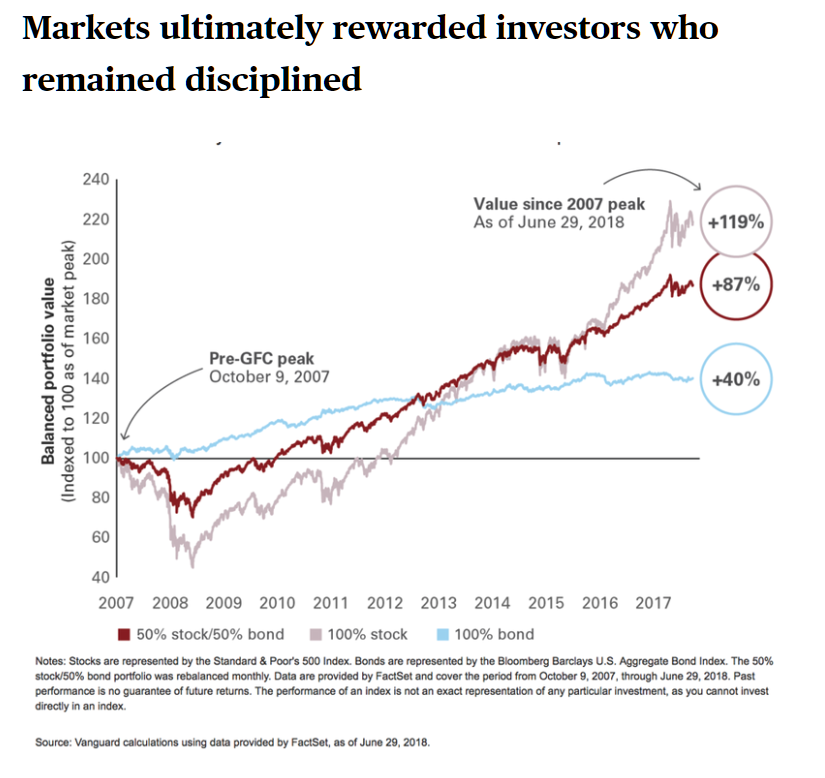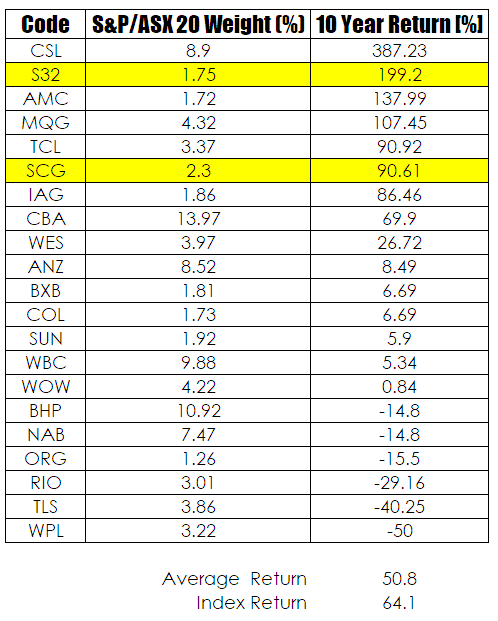I Dont Think It Means What You Think It Means
I came across this chart the other day and the message it was trying to convey intrigued me. The chart is from this Vanguard update.
I am intrigued because the chart is saying that the market rewards those who hold for the long term – in essence it is talking about a buy and hold model. But there is an element in the point being made that is confusing. The chart is of a narrow basket of stocks known as an index – it is not a chart of the market itself. Th may seem to be a pedantic argument but the distinction is important. Someone who buys and holds an index will generally be rewarded in the long term – the Nikkei excluded. This is different from someone who buys a basket of stocks that represent the market. The performance between the two will be different and the chart above will undoubtedly be taken by many (most) to indicate that all you need to do is to hang on for a long time and things get better.
Stocks generate vastly different returns even within a small universe such as the S&P/ASX 20. Consider the table below where I have looked at the 10 year return for the components of the S&P/ASX 20 and ranked them according to return. SCG and S32 are highlighted as they have less than 10 years history.
As can be seen within an index there is a wide discrepancy in returns with CSL returning 387.2% compared to WPL returning -50%. If I were a naive investor and to be honest most investors are naive I would assume that over time my return curve should match the one shown in the first chart. If I had purchased the stocks in the bottom half of this list my returns would in no way resemble the return for the index and I would be left wondering why because I am told that the market rewards those investors who are patient and disciplined. The correct statement is that an index based fund will on average over the long term reward those who hold the index as opposed to those who stocks in the market. The two points are subtly but importantly different
There is nothing wrong with holding an index fund – in fact it is my preferred strategy for all people who hold superannuation as the vast majority of local funds fail to outperform the benchmark index and they charge you a hefty premium for their failures. However, being a stock picker is a different skill set the results of which are not represented by charts tracking the performance of an index.









Well it works if you can hold for 100 years
…or at the bottom of the GFC